May 15, 2025
The Art of Trickerion
Hi everyone, Villő here!
Now that Viktor has taken you deep into the design journey of Trickerion, I thought this would be the perfect time to share my own story – the art side of things. We’re celebrating the 10th Anniversary Edition, and honestly, it’s hard to believe it’s been that long. Trickerion wasn’t just my first board game project; it’s where I learned almost everything I know about board game art, art direction, and graphic design. Board game art is a very specific corner of the design world because you have to balance a lot of moving parts and keep your eye on both beauty and function, all while making sure the final product feels cohesive and immersive. It’s a challenge, but that’s exactly what drew me in and made me fall in love with this work.
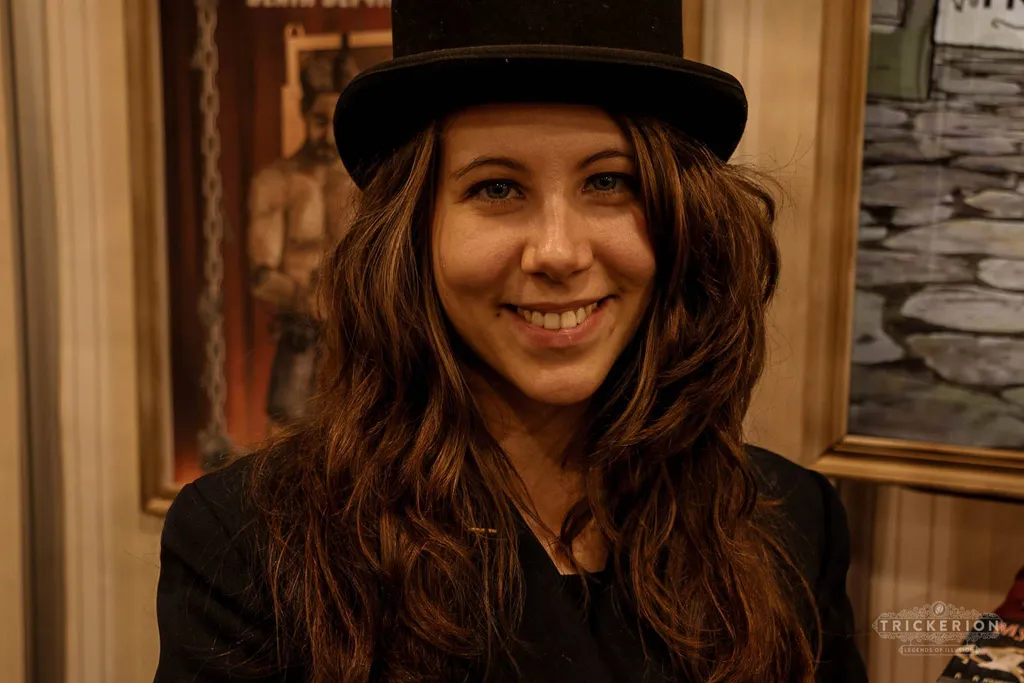
EARLY DAYS AND FIRST STEPS
By the time I joined Viktor and Richard, I already had about three years of professional experience after graduating from the Applied Arts Institute in Hungary. But even with that background, stepping into the world of board games felt completely new and a bit intimidating. Before Trickerion, my experience with modern board games was… well, basically limited to playing Catan a few times, so I knew I had a lot to learn. 🙂 But I also knew how to approach a new challenge: research, gather inspiration, sketch, fail, and try again to find the best possible style for the game. That method really shaped how I tackled this project.
Together with the guys, we built an entire world for Trickerion. We set it loosely in the early 1900s, and it was greatly inspired by Art Nouveau – lots of curves, detailed ornaments, and design elements inspired by nature and beauty. But we also added a twist of steampunk because we wanted Magoria, the city of Trickerion, to feel like its own reality. The freedom of world-building like this is amazing; you can break rules and imagine something completely unique.
BUILDING THE BOARD
Designing the main board was, hands down, my favorite part of the whole project, and also the most complex. The board had to bring Magoria to life, showing both the bustling city with its key locations and the inside of the theatre, too. At the start, we debated how best to lay it all out. I knew right away I didn’t want to use a bird’s-eye view for the city because that perspective felt too flat and distant. I wanted something that felt alive, where you could see the buildings and people, almost like you were standing right there on the street. That’s why I went with a one-point perspective instead. And honestly, it gave me way more room to sneak in little easter eggs about the characters and add tiny scenes between the townsfolk that help bring the world of Magoria to life. It’s funny to think about now, but back then, I felt way more confident with pencil and paper than with my Wacom tablet. So I sketched out the entire board by hand first: every building, monument, and only later added the characters, vehicles, color, and extra detail digitally.
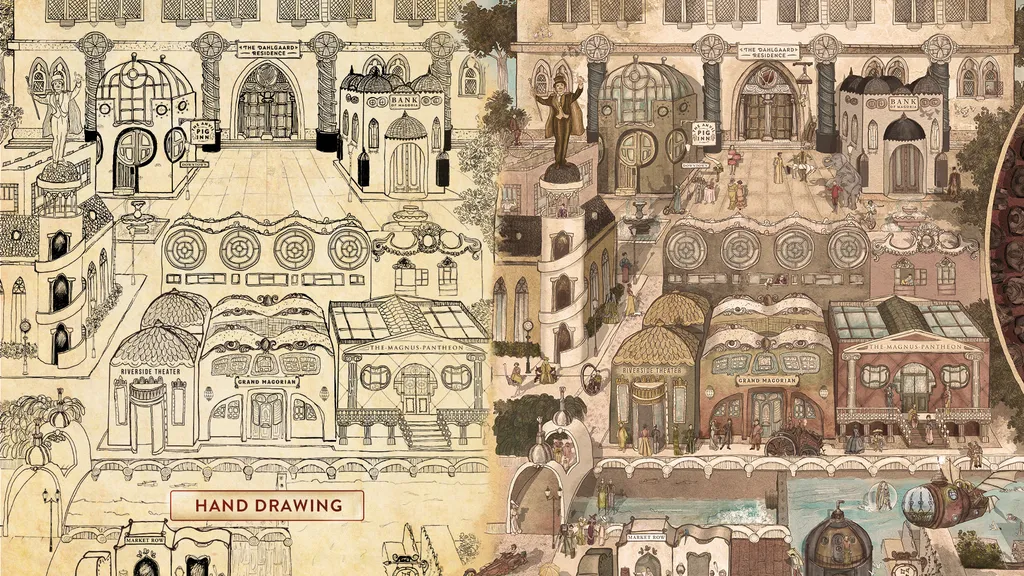
For the theatre section, I did use a bird’s-eye view, because this part needed to serve the gameplay above all. The whole idea was to make players feel like their magician or specialist was actually stepping onto the stage when they placed their worker. One of my favorite little touches on the board is still the fame track, which I designed to wrap around the seats of the theatre auditorium.
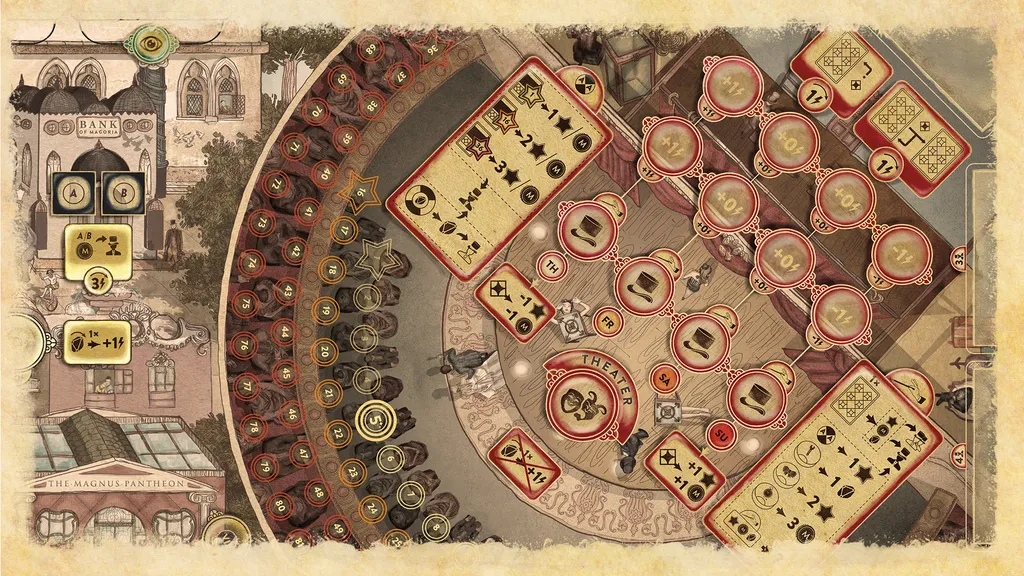
ICONS, ORNAMENTS, AND INTUITION
Designing the icons and user interface was another huge part of my work. We always joke that if a graphic designer does their job well, nobody notices, because everything just feels intuitive. My goal was to make sure the icons and graphic elements blended seamlessly with the illustrations, creating a unified visual language. That’s also why I developed a special ornament style that pops up everywhere – in the logo, on the cards, and even in the box design. My vision for the box was simple and elegant on the outside, but once you opened it, the whole world of Magoria would unfold in full color and detail.
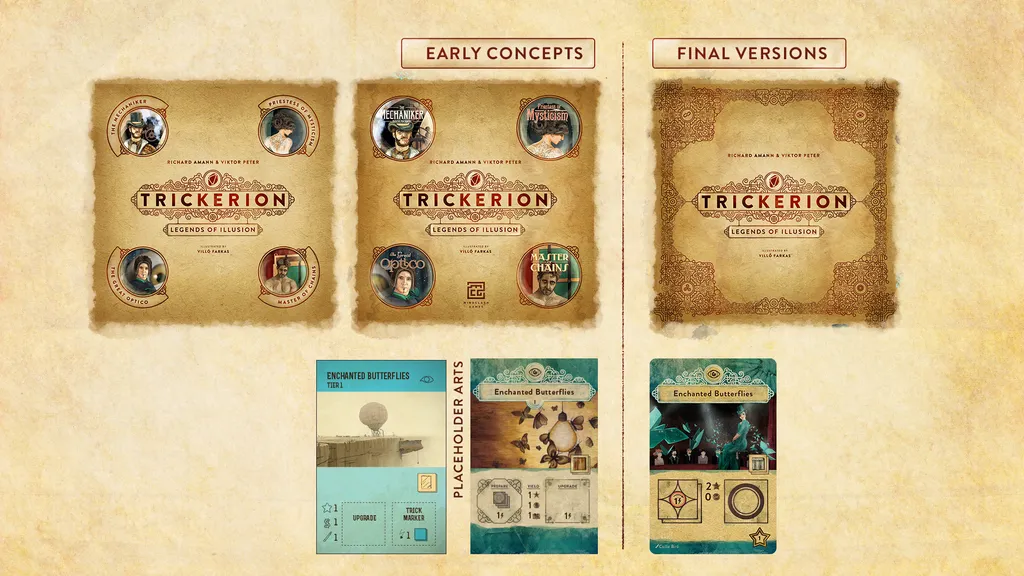
Looking back, I’m really proud of the color palette and the monochrome icon style we used. But I also learned a lot about accessibility – things like making sure colors and shapes are easily distinguishable – and I’ve carried those lessons into every project since. One thing that made our process unique was how closely I worked with Viktor and Richard. We weren’t just passing files back and forth. We sat down together, playtested, and solved design challenges side by side. Sometimes, the art even inspired new game mechanics, which is the best kind of collaboration.
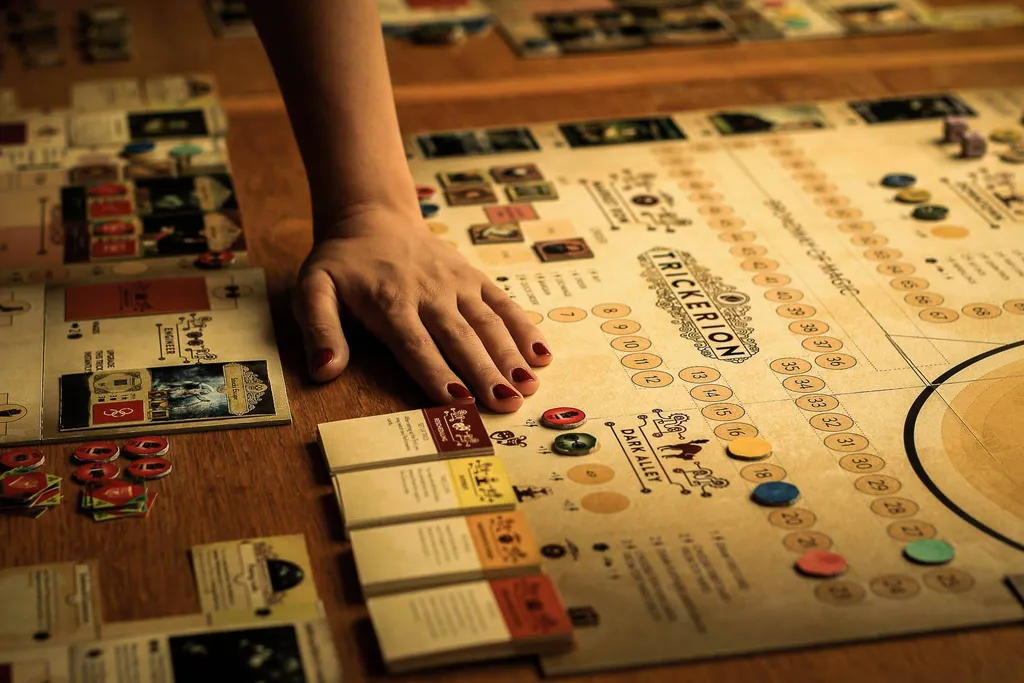
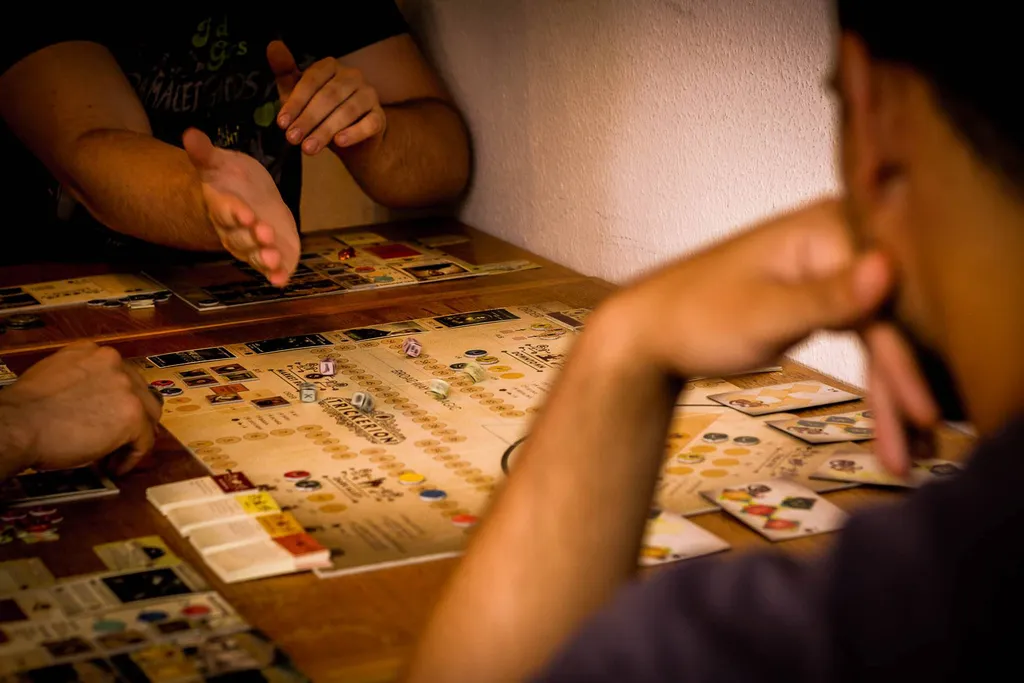
One of my favorite examples of that is the entire trick linking system and the trick tag icons. That whole system developed hand in hand with the UI design. As we worked on how to present the tricks visually, the mechanics themselves evolved too. It was a real back-and-forth process, and I love how it shows the way art and game design can push each other forward.
And a little fun fact about community feedback shaping the game: the assistant specialist was originally inspired by Scarlett Johansson’s character in The Prestige, the movie that was a major influence for the guys in the design. Naturally, we pictured the assistant as a woman at first (even resembling the actress in the film), and my original icon for the role was a woman’s boot: stylish and fitting the theme. But after hearing feedback from the community, we realized that in the world of Magoria, being an assistant (or Magician for that matter) isn’t tied to any one gender. So we introduced a male version of the assistant as well, and to make the icon work for both, we swapped out the boot for a bow. I’ll admit, I still miss the boot a little, but that change made the game more inclusive, so it was a good decision.
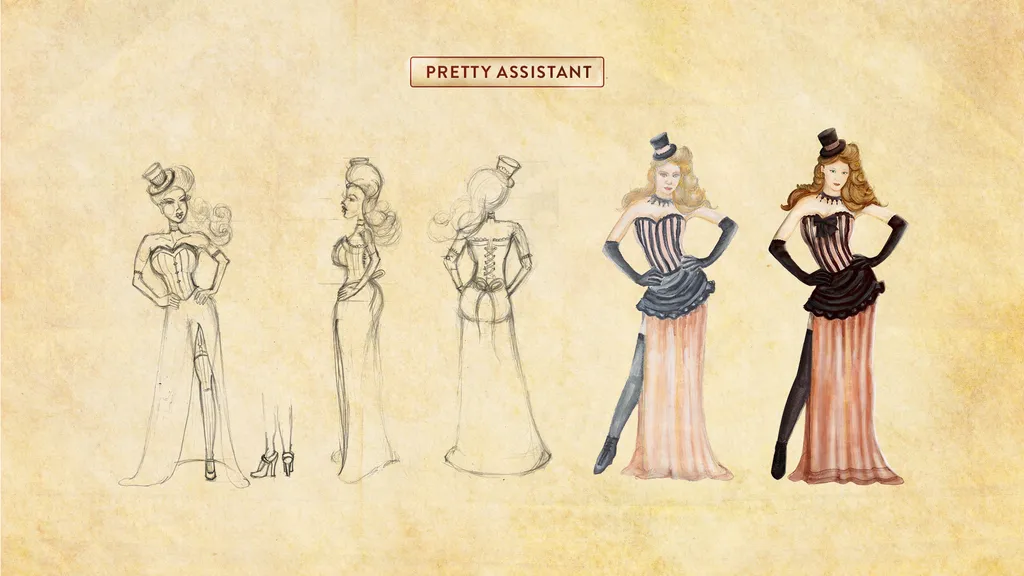
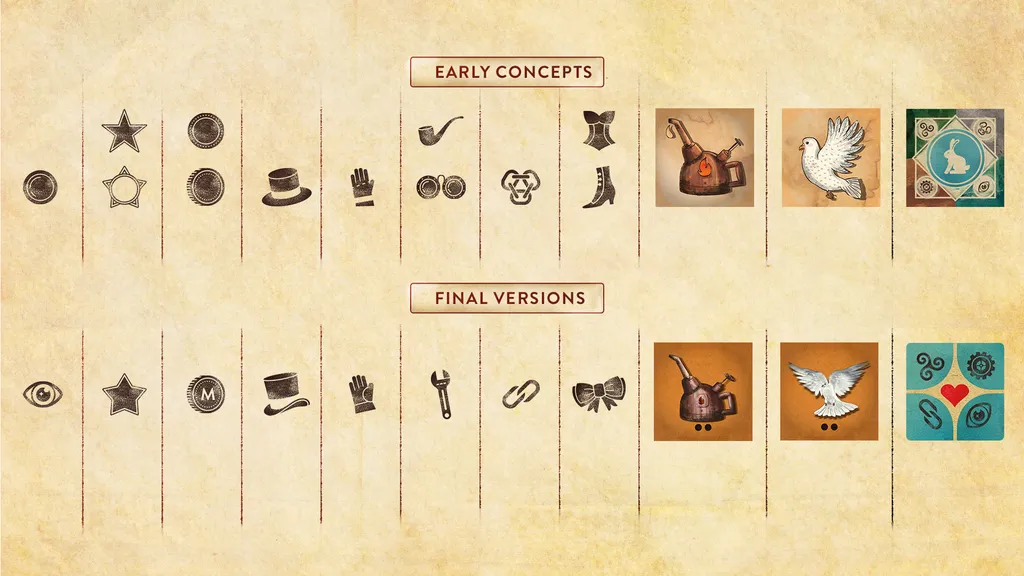
CHARACTERS AND THEIR STORIES
Character art was one of the biggest challenges for me, and also one of the most personal. Designing and drawing people is a whole profession on its own, but I dove in because we really wanted the magicians to feel like real people with depth and personality. Richard and I worked together to create backstories for every magician, which helped me figure out how they should stand, what they should wear, and what their expressions should be.
To bring them to life, I turned to the people around me. Our friends, partners, and family all got roped into modeling, and we even held a photoshoot where everyone took their roles very seriously, posing the way their final characters pose. Honestly, that was one of the best parts of the process: seeing how excited everyone was to be part of the world we were creating.
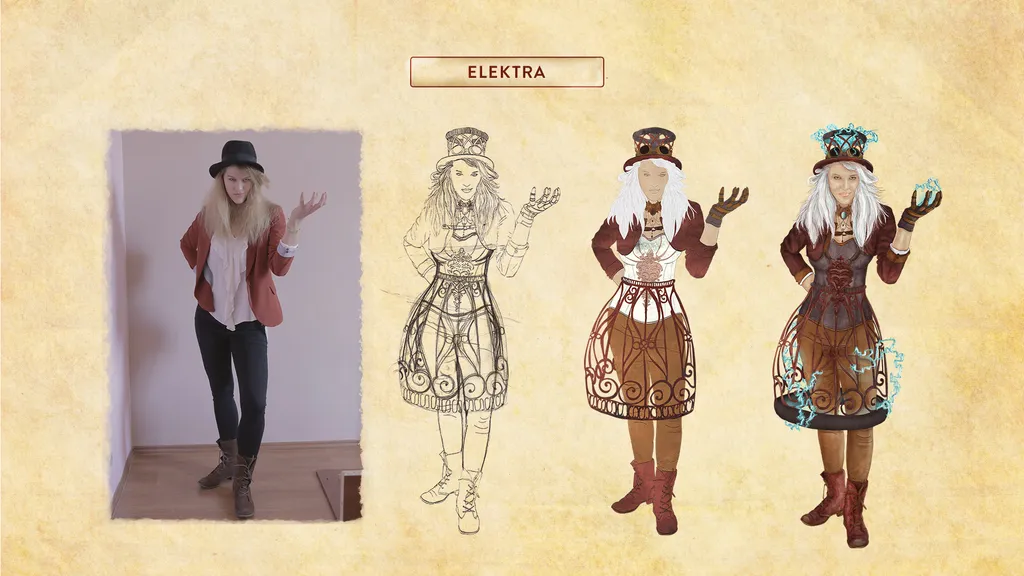
The Priestess of Mysticism is especially close to my heart because she’s based on my mother and me, which feels like a quiet tribute to the person who set me on my creative path.
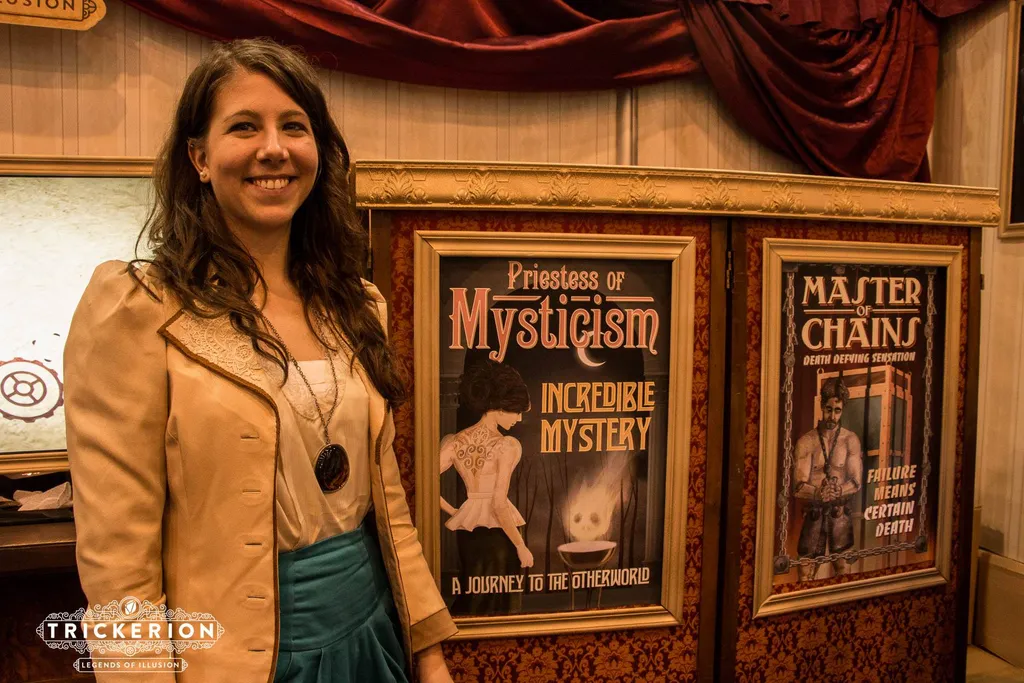
Diversity was also something we heavily focused on. I wanted every player to feel like they could be part of Magoria, no matter their gender, background, or style. That’s one of the best things about working in a world of imagination: you’re free to create a space where everyone belongs. And if you look at the team photo on our Kickstarter page, you’ll spot who became who – there are more familiar faces hidden in Trickerion than you might expect. The characters even immortalize bits of our personal lives… then girlfriends, now wives, siblings, and even exes have a permanent spot in the world of Magoria. 😉 It makes me smile every time I think about it because for us, these aren’t just characters, they’re part of our history too.
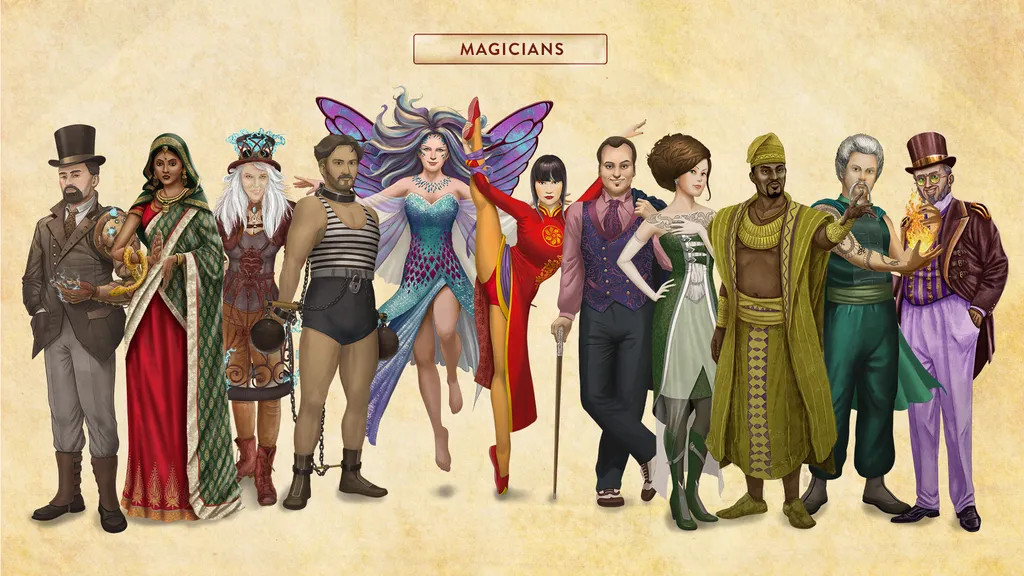
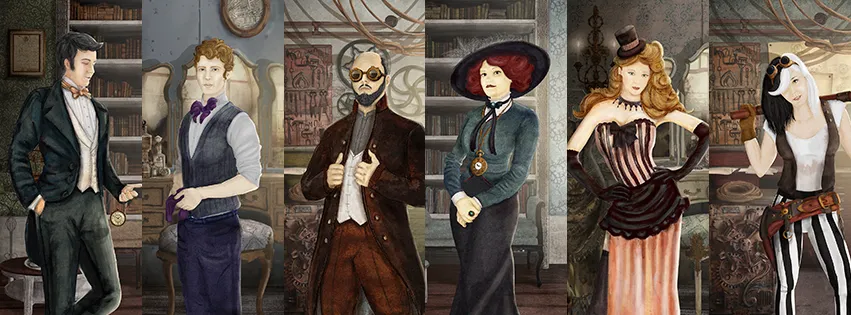
ART DIRECTION AND COLLABORATION
Big games like Trickerion don’t just happen with one person behind the art, it takes a whole team. My job as (newly appointed) art director was to make sure that even though many artists were contributing, everything felt like it belonged together, like it all came from the same world. That’s not always easy when you’re juggling different styles and interpretations, but honestly, it’s one of the things I love most: taking all these pieces and weaving them into a single, unified vision.
We were lucky to have worked with some incredibly talented artists. Attila Sáfrány, Gergő Ádám, and Anna Radnóthy created the magician posters, while Lacza Fejes, Csilla Biró, and Márton Gyula Kiss worked on the Trick cards. Each of them brought their own flair and perspective to the table, and it was my job to be the “glue” that kept it all consistent.
Sometimes that meant getting very detailed with feedback (probably too detailed – sorry, everyone!), and other times it meant just stepping back and letting someone’s creativity shine. It’s a real balancing act, and one of my proudest moments is that when you look at Trickerion as a whole, it really does feel like one cohesive world, even though so many different hands helped build it.

GROWING THE WORLD
The magician workshops were originally illustrated by Ágnes Staudt, a brilliant concept artist whose style really set the tone for what those spaces would look like.
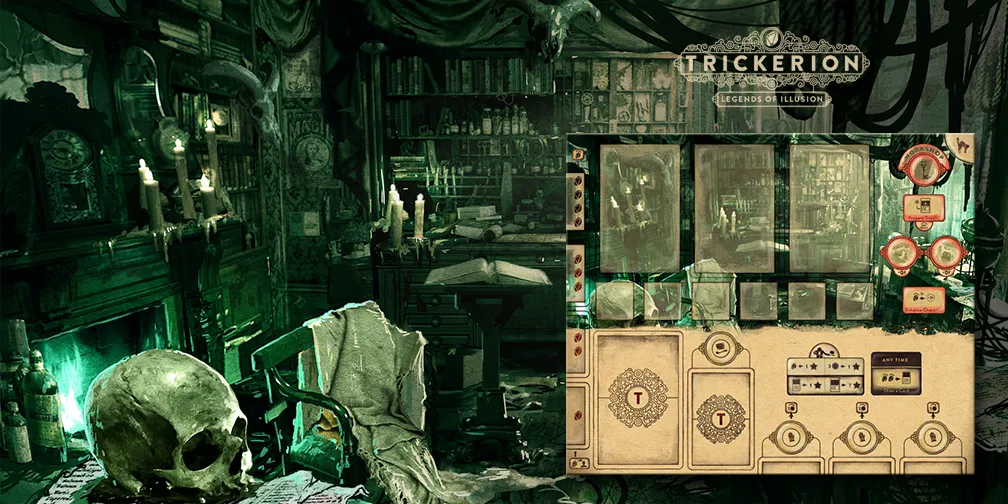
When it came time to expand the game, I picked up where she left off, adapting her vision for the specialist boards and the solo mode boards. It was a bit like stepping into someone else’s shoes at first, but I loved the challenge of keeping things consistent while adding my own touches.
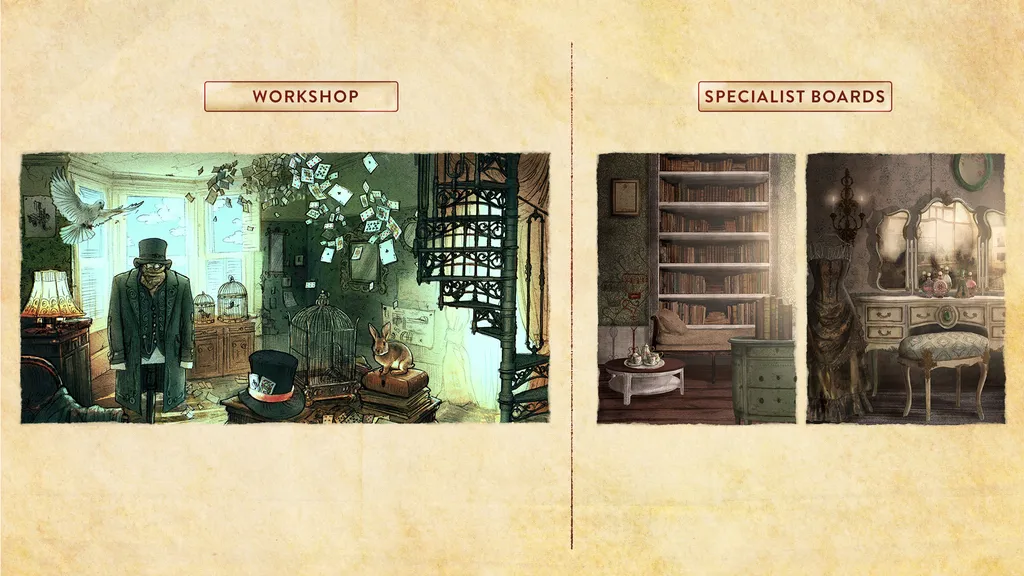
By the time we started working on the Academy and Dawn of Technology expansions, Mindclash had grown a lot – and so had my to-do list. There were more magicians to create, more art to direct, and a whole new location and storyline to bring to life. That’s when Tamás Baranya joined the art team, and honestly, I don’t know what I would have done without him. His sensitive, thoughtful approach to the world we’d built fit perfectly, and it was such a relief to have someone I trusted to help carry that vision forward. Expanding Magoria felt like expanding a family, and working together made it a real joy.
CLOSING THOUGHTS
Every project I work on takes a little piece of my heart, but Trickerion will always be my first love. It’s the game that shaped me, not just as an artist, but as a creator and collaborator. Looking back now, it’s wild to think about how much we learned, how many mistakes we made (and fixed!), and how much love we poured into every single detail.
What makes it even more special is knowing that this world we built, this city of Magoria, has meant something to so many of you, too. Seeing Trickerion on tables around the world, hearing your stories, and watching the game grow over the years has been one of the greatest privileges of my career.
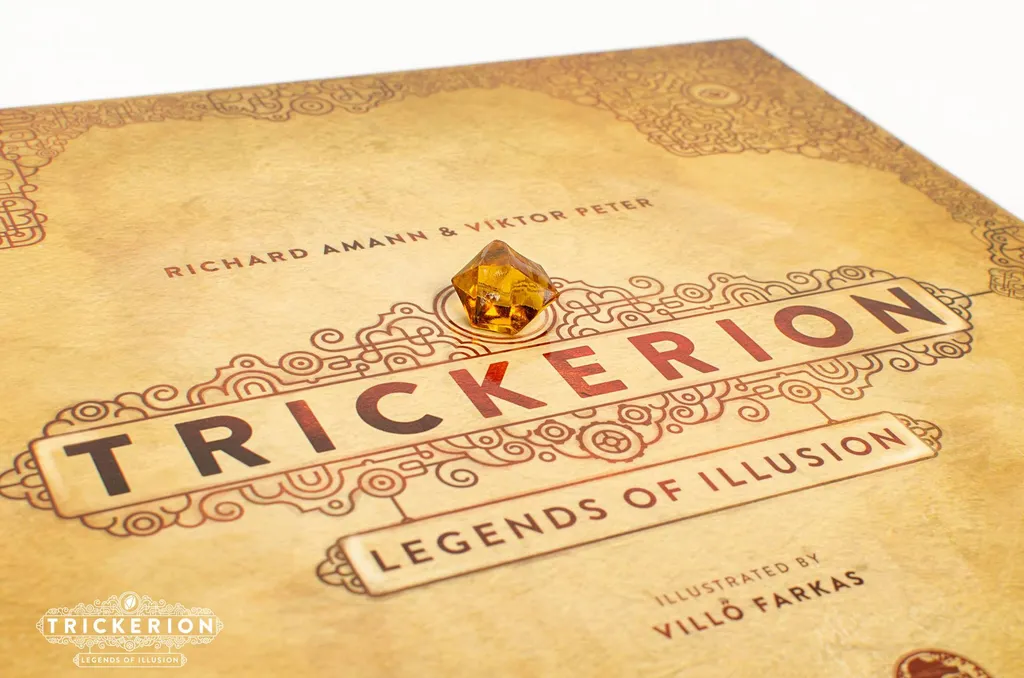
I hope you’ve enjoyed this little peek behind the curtain and that when you sit down to play, you feel some of the same magic we felt while creating it. Thank you for being with us on this journey, and for making the past 10 years so unforgettable!
Villő